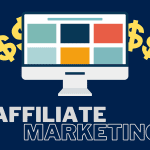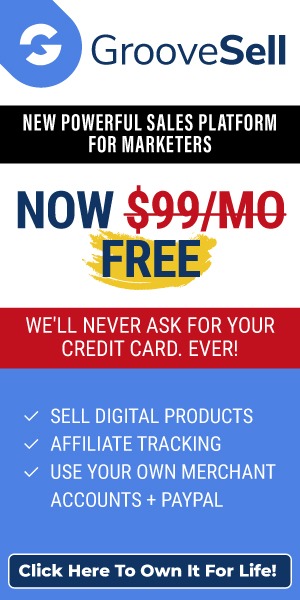
How To Write An Effective Sales Letter For Your Membership Site
In this report, we’re going to take a closer look at something that is absolutely basic and fundamental to success as an Internet marketer.
However, it’s also the one thing that is most prone to mistakes and missteps that, in the end, lead to lost sales and reduced profits.
You already know that the sales page is your biggest Internet marketing asset.
It is where visitors land to find out more about your product, make their buying decision, and then make their purchase right away. Sounds pretty easy, right?
Yes, it is pretty easy to construct an effective sales page if you know the following:
- What elements to include
- In what order to include them
- How to format them for maximum impact
You can do a simple Google search and find all sorts of people out there offering their advice and suggestions for creating a high quality sales page.
If you were to buy all of their information products, read all of their articles, and capture their overall main ideas, what you would most likely find is a hodgepodge of ideas and descriptions.
What we’re going to do here is take this hodgepodge of ideas and descriptions and put some order to it.
You might be able to argue with the names and titles we give to certain elements, but you certainly will not be able to argue with the effectiveness and accuracy of what’s presented here.
If you’re reading this report, then you’re already well on your way to creating a powerful sales page that generates huge sales and profits. Why?
Because you’re now armed with the valuable information necessary to create that kind of success.
#1 – The Headline
Think about the last time you read through a newspaper, magazine, or some other printed periodical.
How do you decide which articles to read and which articles to skip? The headline.
If the headline doesn’t grab you right away, engaging your interest and curiosity, then you’ll most likely move on without checking out the article at all.
The same concept holds true for your sales page; a great headline is absolutely vital to getting visitors to stick around and keep reading.
Newspapers often use a main headline and a sub-headline to enhance the likelihood that you’ll stop to read an article.
On an Internet sales page, though, you need to use three different headlines:
- The “Gotcha” Headline
- The Main Headline
- The “Still Gotcha” Headline.
Each of these has a very specific purpose and must be used in a very specific way if you want to produce maximum results.
The “Gotcha” Headline
This is the first headline the visitor reads, located at the very top of the sales page. It doesn’t need to be huge in size or long in length.
What it does need to do, though, is grab the attention of the specific prospects you’re going after.
So, you’d write it one way if your main prospects are teenagers, for example, but write it in a completely different way if your main prospects are senior citizens.
The Main Headline
This is the most important headline on the whole page because it is the largest, the most eye-catching, and the most concise description of the product’s biggest benefit to the prospect.
It needs to literally jump off the page at the reader in a size that’s too big to ignore.
Most importantly, though, is the emotional reaction this headline creates in your prospects.
If you can capture them emotionally, then you’re well on your way to converting them from prospects to sales.
The “Still Gotcha” Headline
Lots of sales pages don’t use this third headline and that’s a big mistake. Why?
Because this type of headline serves to reinforce the message communicated in the main headline and clarifies for the prospect exactly what benefit or advantage they can expect to gain from making a purchase.
One of the biggest mistakes when it comes to any of these headlines is to use too many words and make it too long.
Remember, just a few really powerful words will be exponentially more effective for you than a lot of words strung together in a long, drawn-out explanation.
#2 – The opening Act
Playwrights use the opening act to introduce their audience to the basic concept of their story, bringing in the setting, the characters, and the like in a way that grabs the audience’s emotions and attention.
It is a vital part of the play because without it, the audience would quickly get lost; they would have no idea of who the characters are and what they are doing there.
The opening act of an Internet sales page is just as vital. This is the section that comes just after the headlines and is used for introducing prospects to your product.
The goal here is the same as in a play; you want to grab the prospect’s interest with a fierce, icy grip on their emotions.
This is really important, so it deserves to be emphasized again:
The opening act must grab the prospect’s interest on a level that’s strongly emotional and it must hang on to that interest intently.
One of the common mistakes we see on Internet sales pages is when people launch into selling their product or service too soon.
While you, of course, want to sell your prospects aggressively, if you do it too early or too quickly, you’re likely to get the opposite effect of what you desire.
That’s why the opening act is so very important.
When you capture the prospect’s emotional interests, they are suddenly much more interested in the rest of the sales page because they feel a “personal” connection to you.
Appealing to their emotions, then, is a powerful sales tactic that isn’t a classic pushy sales approach.
But how can you best grab prospects in an emotional way and with a high level of intensity?
Take a look at these proven techniques:
- Emphasize the benefits prospects will enjoy once they get their hands on your product or service
- Emphasize the positive ways their life will change and improve once they get their hands on your product
- Emphasize the positive feelings they will experience once they get their hands on your product or service
- Emphasize what they will have more of (time, energy, money, success, etc.) once they get their hands on your product or service
- Emphasize what they will have less of (stress, difficulty, debts, struggles, etc.)
You don’t have to go into great detail about each of these things during the opening act; this is just an introductory opening – the full details will be discussed later on in the sales page.
#3 – Honesty & Authority
Everybody who spends any time on the Internet is aware of the huge number of scams, frauds, and other sleazy activities out there and your prospects are no exception.
You’ve already succeeded in overcoming their initial skepticism because they are looking at your sales page, but now you have to do a bit of extra work to convince them to let go of any lingering doubts or worries.
Establishing your honesty and authority with the prospect makes it easier for them to make the move from interested visitor to satisfied customer.
Times are tough nowadays, so getting prospects to spend their increasingly scarce money requires you to be even more creative and authentic about demonstrating your credibility and trustworthiness.
How do you go about doing this? The best way to look at it is that you want to promote your honesty and authority both early and often.
Don’t bury this information deep into the sales page where prospects have to really dig to find it.
If you do, they are never going to find it because they will have stopped reading a long time ago.
Here are some effective ways to go about doing this:
- Talk about specific results, not just generalities
- Use real numbers to describe a benefit or an activity, not just estimates
- Use testimonials that touch on key features or benefits you want to emphasize; these are most effective when you include the full name of the person whose experiences the testimonial describes
- Be sure to mention any special certifications, credentials, expertise, or experience associated with your product
- Highlight positive reviews, quotes, and mentions of your product from reputable outside sources
- Always, always include a real contact address complete with address, email, and phone number; this reassures prospects that you are indeed a real person and not just another scammer on the Web
Unfortunately, true honesty, integrity, and authoritative knowledge are quite rare on today’s Internet.
For every one person like you who is focused on making a legitimate business out of your efforts, there are dozens (or more) of people out there focused on finding new and creative ways to scam unsuspecting prospects out of their time and money.
When you firmly establish yourself as being honest and authoritative regarding your product (beginning early in the sales page and continuing throughout the sales page), you dramatically increase your potential results.
#4 – Inspire With Benefits
Your prospects aren’t going to fall all over themselves to make a purchase just because you have a great product or service; no, you have to capture their emotions and inspire them to take action by describing and emphasizing the most interesting and positive benefits they will enjoy after they buy your product or service.
Benefits are quite different from features; a feature is some attribute or function of a product or service, while a benefit is some advantage, help, or aid that results from owning and using the product or service.
The key to presenting benefits successfully is to identify which ones are most important to your specific prospects and then emphasize them from highest priority to lowest priority.
Research tells us that people reading Internet sales pages do much more scanning than reading, so if you want to capture attention and clearly communicate benefits of your product or service, then you need to present them in a bullet point format.
For instance, let’s say I want you to know my product has many benefits, such as being easy to use, increasing your vocabulary, and improving your writing skills.
Can you quickly and easily find the product benefits written in the paragraph above? No, of course not. Now let’s try it in a better and more effective way.
My product has many benefits, such as:
- It’s easy to use
- It will increase your vocabulary by at least 15%
- It will improve your writing skills by at least one full letter grade
See the difference? The bullet points make each benefit stand out more clearly to the readers, making it easier to catch their attention and tap into their emotions.
Don’t be afraid to include a long list of benefits as part of your sales page; think of each and every thing you can, right down to the smallest little positive outcome you can figure.
Once you have your list, put the benefits in order of priority with the highest priority coming first.
This way, your prospects will read the most powerful benefits first and also have an easy time scanning through the entire list without taking too much time or effort.
#5 – Inform With Features
Think about the last time you went shopping for a bicycle.
You probably looked at a number of different factors when comparing different models; most importantly, the specific features offered by each model.
Items such as the number of gears, the type of brakes, and the type of seat are all examples of important features you looked at and considered.
The same holds true for your product or service; you have to include information about the features (and sometimes specifications) offered so that the prospect will know exactly what they are getting when making a purchase from you.
When you communicate the features well, your prospects get the kind of details they need to make a buying decision.
This is why you need to be as accurate and as thorough as possible.
You’ll gain two advantages by doing this:
- You will increase the conversion rate from prospects to paying customers because your sales page will provide the detailed information needed to demonstrate the value of your product and entice the prospect to make a purchase.
- You will receive fewer complaints and/or requests for refunds because customers will know what they are getting in advance and there will be no unpleasant surprises for them.
In most cases, you’ll want to list the features in the same basic format (bullet points) as the benefits we talked about in the last section, but with a few minor changes.
Because the features represent the details of your product or service, you’ll need to use more text to describe everything clearly.
You may need to use sub-bullets to get all of the information in there without becoming too text-heavy and hard to read.
Another approach that can be very effective is to combine the major features and benefits together so they look something like this:
-
Feature #1
- Benefit of this feature #1
- Benefit of this feature #2
-
Feature #2
- Benefit of this feature #1
- Benefit of this feature #2
This is more of a design and formatting issue, which we will discuss a little bit later on in this report.
#6 – An Extra Bonus!
Everybody likes to think they’re getting a good deal when they buy something, but exactly what goes into a good deal can vary a lot depending on the product, service, and situation.
In most cases, though, the best way to increase the value of something so that prospects see it as a good deal is to add in some sort of extra bonus.
This strategy is used all over the place.
For instance, if you buy cable television, chances are, your service provider has a number of different “packages” available with various combinations of channels and services; each package is offered at a price that’s lower than if you were to buy the individual services separately.
Another example is when you purchase a combination meal at your favorite fast food place; the cost of the meal is generally less than the cost of each individual item purchased separately.
The same approach works very well when it comes to Internet marketing and creating an Internet sales page.
You want your prospects to be strongly enticed to purchase the main product or service, so to sweeten the deal a bit, you offer an extra bonus item.
Maybe it’s an eBook written on a similar subject or perhaps it’s a “special edition” version of a poster, print, or the like.
Whatever it is, when you offer an extra bonus, you make it harder and harder for the prospect to walk away without making a purchase.
The best bonuses are those things that customers would very likely be willing to buy separately from your main product; adding bonuses like these to your main products is what makes your offer appear to be such a great deal to them.
Just as importantly, the best bonuses are those things that cost you as little as possible to provide.
By keeping your costs down, but still adding value for the customer, you increase customer satisfaction and increase your profits at the same time.
No matter how much (or how little) you pay to get your hands on the bonus items, always include a specific value for the item when you’re promoting it on your sales page. Why?
Take a look:
- Buy my eBook today and get this special workbook for free!
- Buy my eBook today and get this special workbook (a $50 value) for free!
Which one of these is the most compelling offer statement? The one with the value attached, of course.
It’s just one more way to remind your prospects that making a purchase from you is not only an excellent decision, but an excellent value for their money as well.
#7 – It’s A Good Deal
A common mistake made on Internet sales pages is to put lots of emphasis on the value of any bonus items while not emphasizing (or even mentioning) that the main product or service itself is a really great deal.
Bonuses alone are not going to convert the vast majority of prospects into customers; it’s the main product they came to find out about and it’s the value (or lack of value) of that product that is most likely to drive their buying decision.
The idea here is to build up in the prospect’s mind just how fantastic and valuable the product or service is to them.
You’ve already done a lot of this by pushing the features and benefits, but you’ve also got to do this by specifically pushing the price value of the product or service as well.
Here are a couple of examples to illustrate this point:
- Buy my eBook for $25 and start enjoying its benefits right away.
- When you buy my eBook for $25, you not only get lots of information, but it’s also a great deal. Comparable eBooks sell for $50, $75, and even $100 or more!
Can you see the difference?
The second example is much stronger because it clearly lets the prospect know they are getting a great deal on the eBook; if they were to buy a similar eBook from someone else, they would end up paying a lot more money!
There are other aspects of selling your product or service that also help the prospect to see they are getting a good deal.
Some examples of this include:
- Offer a “no questions asked” satisfaction guarantee
- Promote that you’re selling the product or service at a low introductory price
- Emphasize an urgent need for the prospect to act right away due to a deadline, limited number of products available, or something similar
Another way to communicate that your product or service is a great deal is to offer information and details that deal directly with the most common objections or concerns your prospect is likely to have.
This is a tactful way of overcoming those objections at the same time, as you are promoting the great value of your product or service.
#8 – Ask For The Sale & Take The Order
What’s the first thing every sales training book or seminar hammers into your mind? Ask for the sale. It’s as simple as that.
You can put all sorts of time and energy into convincing a prospect that your product or service is of superior quality and a great deal, but if you don’t finish things up by literally asking them to make a purchase, then you’re leaving tons of potential sales and profits sitting on the table.
Think about the last time you went shopping for a car; how many times did the sales person say something to the effect of “what will it take to get you into this car today?”
Each time this happened, they asked you for the sale.
Too often overlooked, though, is what happens when the prospect says “yes” to the sale. How is it that they get started on actually placing their order?
This is an especially critical concern on Internet sales pages because your prospects do not have the benefit of somebody sitting right there with them and walking them through the entire process.
Instead, they have to start the process and go through the steps on their own; if they encounter even one little difficulty or one direction that is confusing, chances are they’re going to give up and go away.
And you’ve lost a sale.
So how can you go about asking for the sale and taking the order?
There are lots of great ways to do it, such as:
- Include lots of “order now” links throughout the sales page, with each one taking the prospect directly to the order page
- Provide very simple, clear, step-by-step directions for completing the order process
- Provide several payment options, such as credit card, PayPal, Google Checkout, and the like; promote these options in several places on the sales page
- Assume the buyer has never purchased anything on the Web before, and structure the process/directions accordingly; remember, the simpler and easier, the better!
- Repetition is important; repeat the ordering process and instructions multiple times and in multiple places
The Internet is unique in its ability to connect you instantly with many tens of thousands of prospects; this same connectedness and ease of navigation, though, also makes it more likely your prospects will change their minds and go to another website in the blink of an eye if they encounter even the smallest problem or issue during the sales and ordering process.
Make sure your sales and ordering process is flawless!
#9 – The Closing Act
Just as the opening act of your sales page introduced prospects to your product or service and captured their attention on an emotional level, the closing act must also take your prospects and move them through to a completed sale.
You’ve spent the entire sales page emphasizing the benefits, features, value, and so forth; now it’s time to close things out with a really compelling summary and a final request for the sale.
The best and most effective approach is to use a summary-type tactic. Review the sales page and pick out the most powerful information to put in the closing act summary.
Ask yourself the following questions:
- What are the two to four features that are most likely to entice a prospect to make a purchase?
- What are the two to four benefits that are most likely to connect emotionally with a prospect and entice him/her to make a purchase?
- What is the value of this product or service to the prospect?
- What is it that makes this product or service such a good deal?
Write down your answers to these questions because they are the things to touch upon in the closing act.
While some people find this part very easy because they’re just taking existing material and tweaking it a little bit, most people struggle with this because they find it really hard to pick out just those pieces of information that are most important to include in this section.
The tendency is to include way too much in this section, rather than emphasizing just the most important things.
Remember too that an effective closing act, of course, includes an effective request to the prospect that asks them to make a purchase.
It’s not about making them feel guilty or forcing them into buying from you, but rather, it’s more about reviewing the emotional highlights of the product or service and respectfully asking them to take action.
Some Internet sales page developers tend to pay the majority of their attention to the body of the sales page, then skim over or put half-hearted efforts into creating the closing act.
This is a mistake that can end up costing you sales and profits.
Of course, the body of the sales page deserves the bulk of the attention since it is the real “meat” of your Internet marketing, but that does not at all diminish the importance of giving just as much attention to the closing section.
The closing act is the last thing your prospects see and read, so do everything you can to create a favorable (and lasting) last impression.
#10 – Format For Success
The words and ideas you present on your Internet sales page are important, but just as important are how they look to the reader on the screen.
In other words, the way you format your content has as much (and maybe even more) to do with your overall sales success as any other element we’ve discussed here.
Formatting your sales page for success is a combination of creativity and structure.
The very best sales pages pay equal attention to these two items, making sure they work together and balance each other out in combination.
Let’s start with creativity. This is the aspect of your sales page that has to do with being imaginative and interesting with aspects such as the:
- Font style, size, color
- Bullet point styles
- Regular, bold, italics, underline
- Page alignment
- Graphics
There are literally thousands of different combinations you could create by combining these things in different ways. Take, for instance, your main headline.
What font should you use? How big should it be? What color should it be? Where should it be positioned on the page?
Where should a graphic, picture, or logo be placed? Play around with different colors and combinations, but don’t rush into a final decision.
Come up with a couple of different options and then put it aside for a day or two; when you come back to it, you’ll be surprised at the perspective you have gained and the things you’ll notice about the sales page.
Structure is also important to a successful sales page.
Once you have picked a set of fonts, colors, graphics, and the like, be sure to use them in a consistent structure throughout the page.
For instance, if you decide to use Arial Bold font in the color blue for a section heading, then use that same combination for all of the section headings on the page.
This kind of consistency gives the prospect a sense of continuity while they’re reading and also provides a visual prompt or clue that they are beginning a new section of the page.
There is no such thing as the single perfect format for an Internet sales page.
It will take some time and some effort on your part to figure out what works best for your product or service.
Once you have done this, though, you will have a sales page template in hand that you can use as a starting point for many other sales pages to come!













